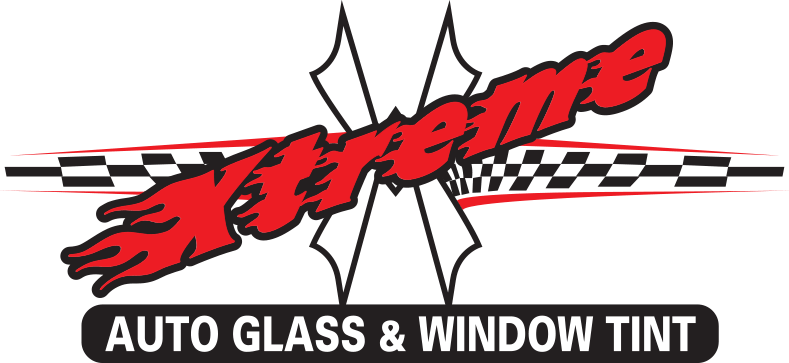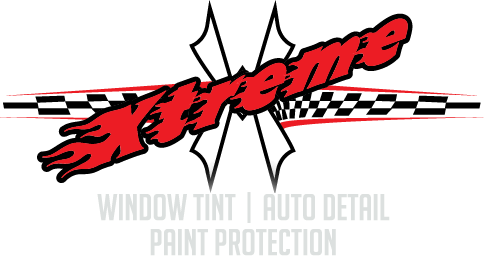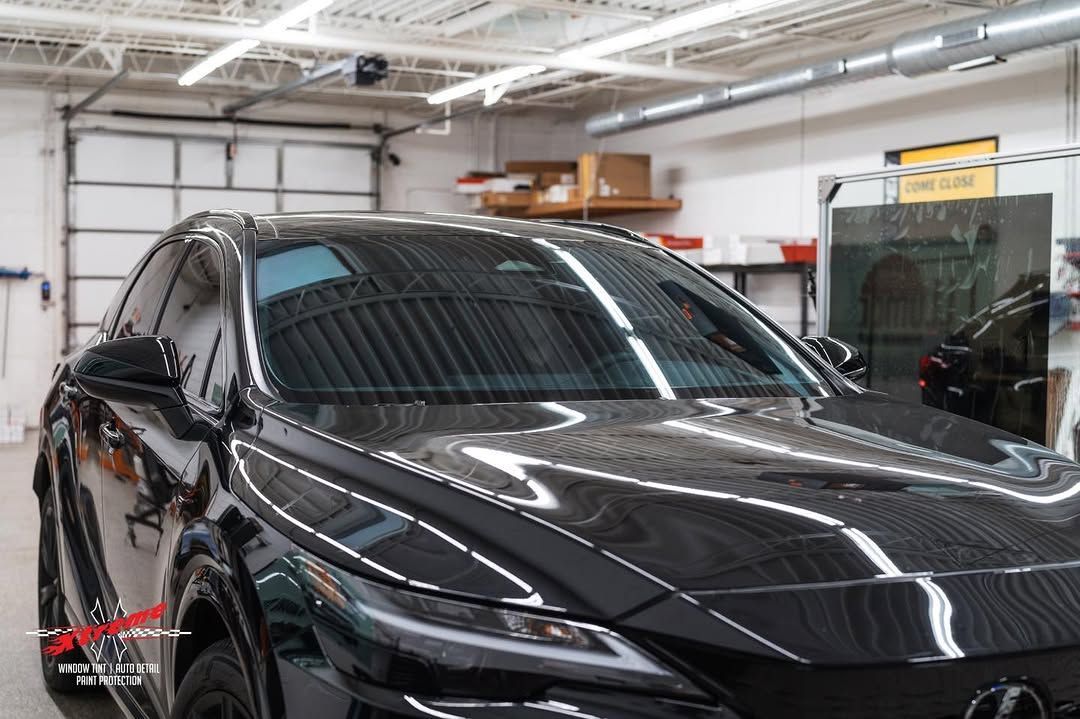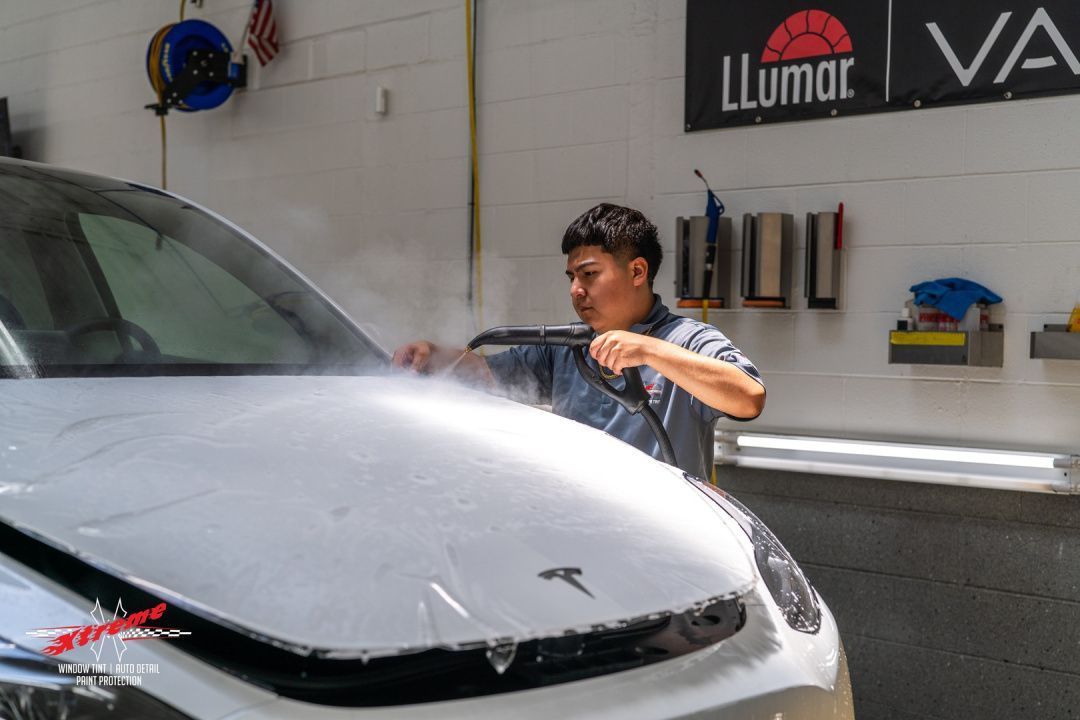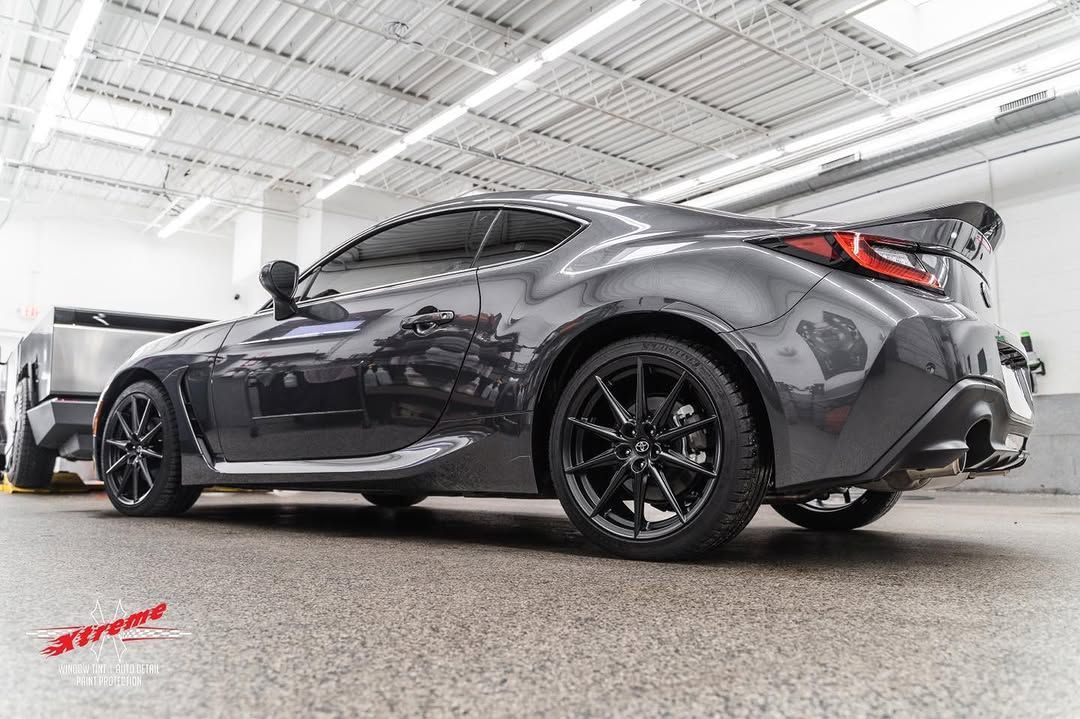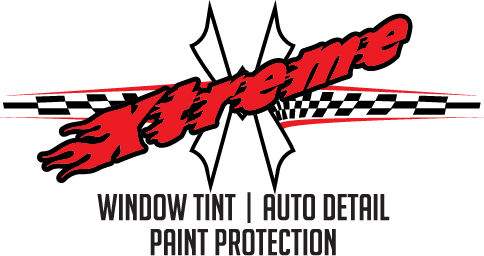We Offer 0% Financing on all Services for 6 or 12 months - Apply Now!
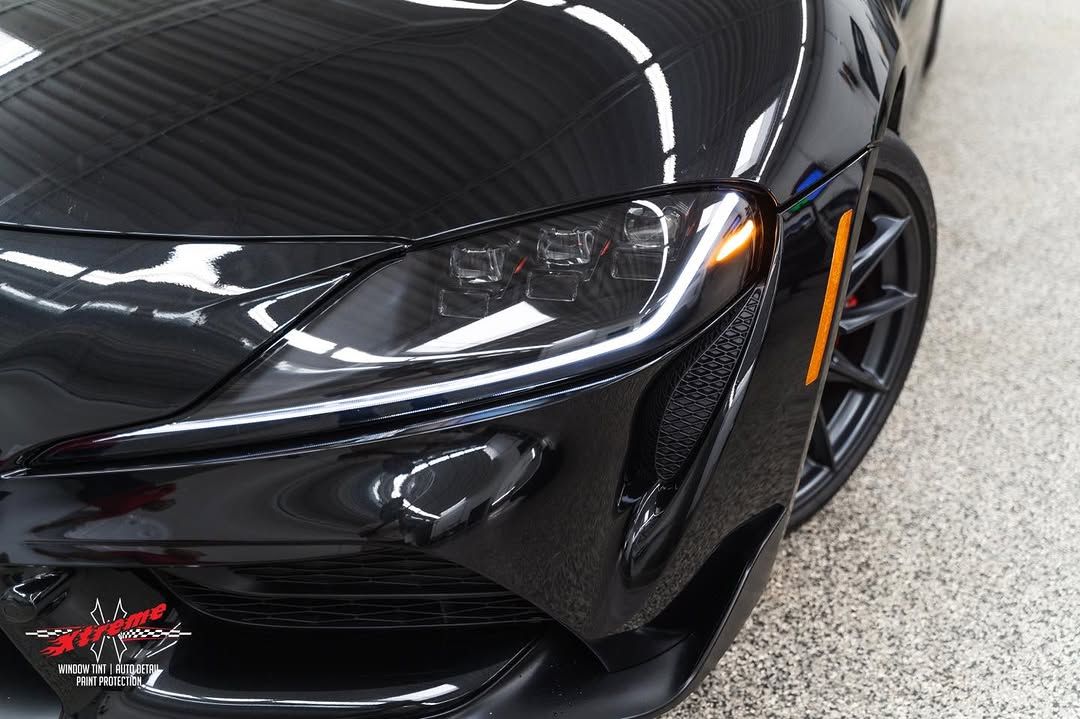
As winter rolls in, many car owners find themselves faced with a daunting challenge: how to protect their vehicles from the harsh elements that come along with snow and ice. From road salt to freezing temperatures, these factors can wreak havoc on your car's paint over just a few months.
Instead of worrying about chips, there's a solution that offers peace of mind: paint protection film (PPF) combined with ceramic coating. This dynamic duo works hand in hand to shield your vehicle’s exterior while keeping it looking sharp, even in the toughest winter conditions. In this article, we’ll explore why this combination is your best bet for maintaining your car’s beauty and value when the cold hits hard.
The Ultimate Winter Combo for Your Vehicle
For car owners, winter weather presents a unique set of difficulties. Between road salt, snow, and cold temperatures, these elements can wear down a vehicle's exterior if not properly managed. That's where the combination of Paint Protection Film (PPF) and Ceramic Coating comes into play. Together, they form a formidable barrier against the harsh realities of winter driving.
Picture this scenario: you’re commuting to work on a snowy morning, and as your tires crunch over icy roads, small chunks of ice and gravel fly up from vehicles ahead. Here’s where PPF acts like robust armor for your car, absorbing those impacts while preventing unsightly chips on your paint job. But it doesn't stop there—Ceramic Coating enhances your vehicle's longevity by providing a glossy, hydrophobic layer that keeps water, snow, and dirt at bay.
Furthermore, maintaining the aesthetics and integrity of your vehicle through these protective measures translates into better resale value down the line. A well-protected car during winter months has been shown to retain its shine longer while reducing the overall cost associated with repairs and detailing sessions.
PPF: Shielding Against Winter's Worst
Paint Protection Film is your vehicle's best friend when it comes to facing the harsh elements of winter. This advanced technology absorbs impacts from road salt, icy debris, and other aggressive materials on the road, creating an essential barrier to maintain your car's pristine exterior. Imagine driving down a snow-covered street where every bump could spell disaster for your paint job; without PPF, your vehicle would be left vulnerable to these winter threats. You can face even the harshest winter weather with confidence if you have PPF in place.
Consider the scenario of navigating a salt-covered road. Without PPF, your car’s paintwork would bear the brunt of corrosive salt, leading to unsightly blemishes and long-term damage. Fortunately, this transparent film acts as a shield, locking out harmful substances that typically wreak havoc on your vehicle’s finish.
Key Features of PPF
- Impact Absorption: Its capacity to absorb impacts from little collisions or rock chips is one of its best qualities. The durability of PPF softens day-to-day wear and tear before it reaches your vehicle’s paint.
- Self-Healing Technology: Picture this: you accidentally nudge against something rough while parking, leaving a tiny mark on the surface. With self-healing technology, that minor imperfection can vanish with just minimal exposure to heat. The film’s material reacts to warmth by ‘healing’ itself, thus keeping your car looking brand new.
- UV Resistance: Many underestimate the sun's glare during winter months. Even in cold weather, sunlight can lead to discoloration over time. PPF provides UV resistance that prevents fading and oxidation caused by the sun's rays.
- Protection Against Corrosion: If road salt is not controlled, it can lead to serious corrosion. PPF effectively stops harmful substances from reaching your car's paint and causing rust over time.
While some may argue that PPF alone suffices for winter protection, it's essential to recognize its limitations. Although formidable against physical damage, PPF does not repel water or chemical stains effectively.
This is where integrating ceramic coating becomes vital—providing an extra layer of defense against various potential threats while enhancing the overall appearance of your vehicle’s finish. Together, they create a powerful synergy that ensures comprehensive protection throughout every winter season.
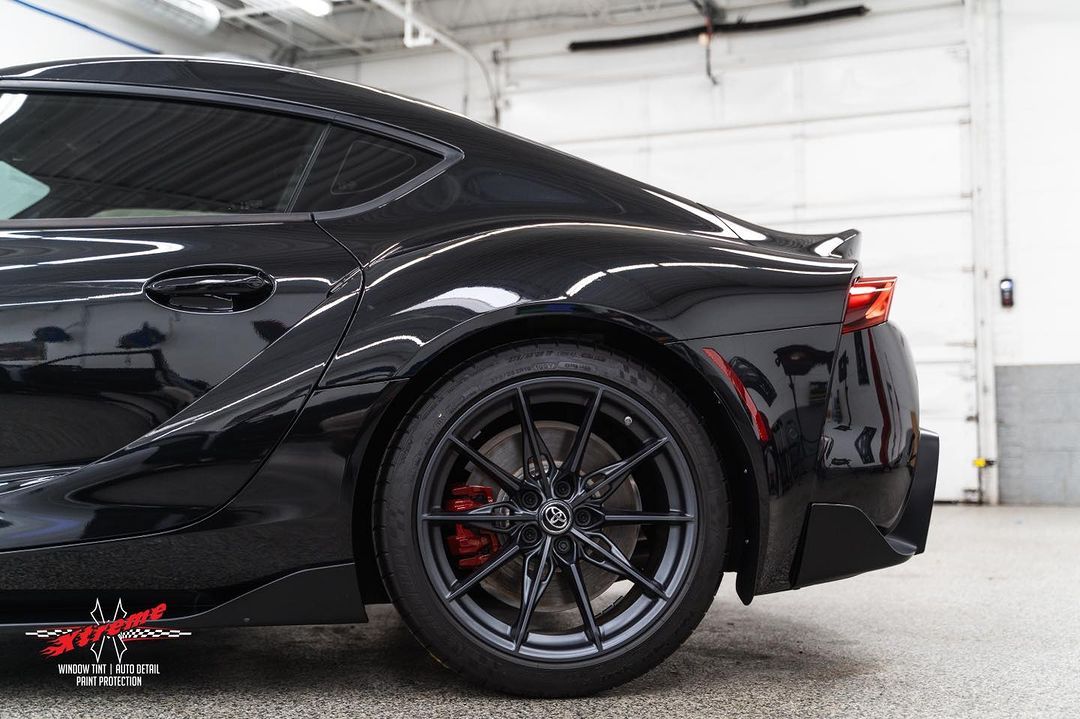
Ceramic Coating: Enhancing Durability and Shine
A meticulously applied ceramic coating creates a robust hydrophobic layer that not only repels water but also keeps mud, sleet, and grime from clinging to your vehicle. This means that when winter weather strikes, washing your car becomes a much simpler affair. Just think about how satisfying it is to watch the dirty water bead up and roll off the surface, leaving behind a clean coat free of spots and stains. This protective layer significantly reduces the frequency at which you need to wash your car, saving time and effort while keeping it looking pristine.
But the benefits don’t end with cleanliness. The coating bonds with the paint at a molecular level, forming an incredibly durable shell that guards against oxidation and chemical etching caused by harsh elements like road salt. This is particularly vital during winter months when corrosive substances are prevalent on the roads. The technology behind ceramic coatings provides vehicles not just with shine but also with an extra layer of resilience against the unforgiving nature of winter driving conditions. So, you can rest easy knowing your car's finish is safeguarded against environmental wear and tear.
For instance, if you're the proud owner of a black car, commonly exposed to intense sunlight coupled with reflective snow in winter, the odds are high that you'll begin to notice the dreaded fading over time. With ceramic coating, however, you maintain that rich color and depth of shine throughout harsh winter conditions, helping your vehicle look newer for longer.
Moreover, vehicles with ceramic coating experience significantly fewer issues with external damage from contaminants. Think of it as having an invisible shield that doesn’t just look appealing but actively protects your investment. Every mark—no matter how small—has the potential to harbor rust or create a weakness in your paint job. By minimizing these risks through a quality ceramic coating application, you're setting yourself up for success down the line, cutting potential repair costs.
Combined Protection: Benefits of Using Both
Using both Paint Protection Film (PPF) and ceramic coating gives your vehicle robust, dual-layered defense against winter’s harshest elements. Imagine driving through slushy streets, where road salt and grime threaten to ruin that pristine finish you've worked hard to maintain. By applying PPF first, you create a formidable barrier that absorbs physical impacts from flying ice chips and debris. This initial layer acts almost like a shield, preventing rock chips that could mar your paint job.
Layered Benefits
Following the installation of PPF, the next step is to apply ceramic coating. This layer not only enhances the vehicle's appearance with a glossy finish but also provides exceptional hydrophobic properties. Water beads off the surface, making cleaning that much easier after a harsh snowy day. More than just a lovely face, ceramic coatings resist chemical stains from things like road salt and prevent water spots that can form when snow melts on your hood and doors.
The synergy between these two products is quite impressive. PPF absorbs impacts, while ceramic coating protects against staining and corrosion caused by environmental factors. This one-two punch means your car can handle everything winter throws at it, ensuring long-term preservation of your vehicle's exterior. For instance, while PPF guards against minor dings, the ceramic coating helps maintain that like-new shine even after battling through a barrage of winter elements.
Here’s an insider tip: combine these protective layers for a comprehensive approach that extends the life of your vehicle’s paint by 5-10 years compared to untreated surfaces.
If you're considering this ultimate protection for your vehicle, check out our services at Xtreme Auto Glass & Window Tint in Addison, IL, for expert installation. We specialize in both PPF and ceramic coating applications that ensure your car is ready to take on winter with confidence.
Application Tips for Cold Weather
Applying PPF (Paint Protection Film) and ceramic coatings in colder weather requires a bit more attention than it does during warmer months. One of the most essential tips is to ensure that your workspace is heated to at least 60°F. This temperature is critical not just for comfort but also for allowing the adhesive properties of the PPF to bond correctly to the vehicle surface. If you apply PPF in a chilly environment, you could face poor adhesion issues that may compromise the protective layer.
Once your garage or workspace has been warmed up, the vehicle's surface must receive proper attention before any coatings are applied.
The next step involves cleaning the surface thoroughly. A meticulous cleaning process helps remove road salt, grime, and other contaminants that can get trapped beneath either your PPF or ceramic coating. Without a clean slate, those particles can lead to imperfections that defeat the purpose of the application—it’s like trying to paint a canvas with specks of dirt already on it. Consider using a gentle clay bar treatment followed by thorough washing and drying for the best results.
After ensuring a spotless surface, it’s time to layer on the protection.
Before moving on, allow some patience as we now head into applying ceramic coatings. You’ll want to maintain this controlled environment while waiting for 24-48 hours after applying PPF; this window permits the application film adequate time to cure properly. Rushing this process in cold weather without allowing sufficient curing can compromise both products' effectiveness, resulting in an inadequate barrier against external elements.
Keeping the vehicle dry during this initial cure period is paramount—moisture can significantly hinder the drying process, which ultimately reduces the effectiveness of your new coatings.
Once the products have been successfully applied and cured, it's about managing usage carefully.
Here’s where you need to be mindful of driving conditions after applying these protective layers. Hold off on driving in frigid conditions for at least 24 hours post-application. This approach not only lets your products cure right but also ensures you're not risking any damage due to unexpected weather elements, like snow or rain that might compromise the integrity of your fresh coatings.
For those considering professional help to ensure optimal application during wintertime challenges, don't hesitate to reach out to Xtreme Auto Glass & Window Tint in Addison, IL. Our expert team can help with quality ceramic coating and PPF application; your vehicles will be protected optimally throughout even the harshest winters.
For expert help or more information about how PPF and ceramic coatings can transform your car maintenance routine this winter, contact Xtreme Auto Glass & Window Tint at (630) 457-8109 today!
